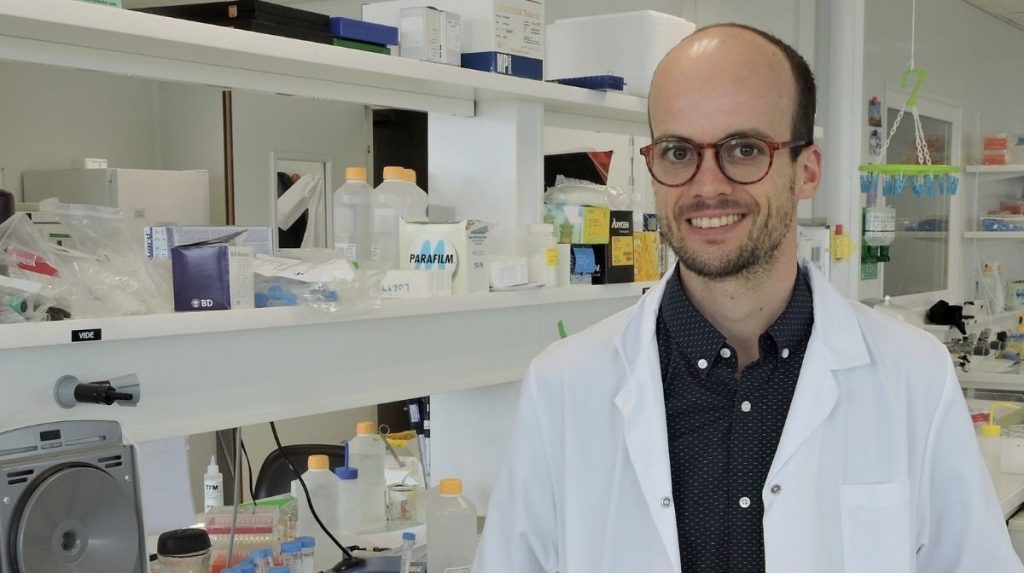Muscle Diseases: Jean-Baptiste Dupont Innovates with Alternative Study Models
In Nantes, Jean-Baptiste Dupont is developing in vitro models of human muscles using cells from patients with Duchenne muscular dystrophy. The researcher has two goals: improve the study of this hereditary muscle disease and test gene therapies in development – both thanks to organoids that will enable more reliable observations than those obtained using the animal models currently available.

Jean-Baptiste Dupont is opening up an essential avenue for the development of effective treatments for muscle diseases. Leader of the Next Generation Disease Models team within the Translational Research in Gene Therapy* research unit in Nantes, this young Inserm researcher may have found a solution to the lack of reliability of the models currently used to study genetic muscle diseases and develop treatments for them. It is true that gene therapy is beginning to prove its efficacy in a certain number of indications and remains a major hope for people with diseases such as Duchenne muscular dystrophy. But research is facing a major obstacle: « The animal models we use do not reproduce human pathology well enough. In particular, they do not allow us to determine with any certainty the efficacy of the therapies in patients, » explains Dupont.
The researcher therefore decided to take a different approach. His desire is to develop new in vitro models, based on the use of human cells. To do this, he has set up his own team: using the Atip-Avenir funding obtained at the end of 2020, he has recruited an engineer, two Master’s year 2 students, and a part-time bioinformatician. In concrete terms, the team is now seeking to reconstitute muscle tissue from « induced pluripotent stem cells » (iPS cells) derived from patients. This consists of taking cells from volunteer patients, from their skin or even from a urine sample, genetically reprogramming them into cells capable of producing all types of the body’s cells, known as « pluripotent », and then inducing their differentiation into muscle cells.
« In standard 2D culture, the muscle fibers we obtain are capable of contracting. But we need to go further because these fibers are poorly organized and the cells constituting them are not mature enough. To reproduce a functional tissue identical to that of patients, we are developing a culture protocol in a gel, in 3D, » continues Dupont. Eventually, by pushing cell development as far as possible within these cultures, he hopes to obtain true organoids – mini muscles designed in vitro that would faithfully reproduce the structure and function of a human muscle.
Great potential
These models will enable several advances, the first being a better understanding of the physiopathology of muscle diseases. « Currently, we are sequencing RNA produced in the heart of diseased muscle cells. We are collaborating with a start-up that uses highly sophisticated bioinformatics tools to analyze these data and indicate the deregulated gene networks. We expect to learn a lot about the molecular mechanisms of Duchenne muscular dystrophy, » explains the researcher. These models will also be used to test the efficacy of gene therapies and other treatments. They will enable precise observations of the molecular corrections produced by these approaches.
The iPS cells used by the team come from lines derived from patients with Duchenne muscular dystrophy, generated in Seattle where the researcher did his first post-doc. The mutations they carry and the clinical profile of the patients are well characterized, facilitating interpretation of the results. Dupont hopes to develop equivalent models to study other types of muscle diseases: sarcopenia, which is age-related muscle loss, or cachexia, which is muscle degeneration related to certain chronic diseases – notably cancer.
An impressive track record
The researcher’s interest in this field is not new and has developed over the course of his career. He prepared his dissertation on gene therapy in Nantes, following which he completed two post-docs on iPS cells – the first at the Institute for Stem Cell and Regenerative Medicine at the University of Washington in Seattle, and the second at the Institute for Stem Cell Therapy and Exploration of Monogenic Diseases (I‑Stem, Inserm Unit 861) in Evry. New expertise that he is building on back in Nantes! His team has financial visibility over the next three years but, keen to go far, he has already started looking for additional budgets by responding to various calls for proposals.
Note:
*Unit 1089 Inserm/Nantes Université, Translational Research in Gene Therapy
